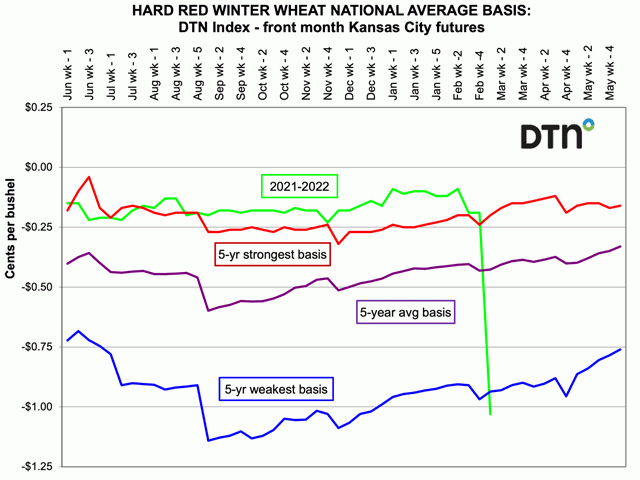The writer, Mary Kennedy, could forget 90% of what she knows about markets and still run circles around the average trader. (present company excluded, of course)
From DTN Progressive Farmer, March 7:
Beginning traders learn the simple math of how to define a basis by taking the cash price (also known as the flat price) minus the futures price. They also learn the three main factors affecting basis are transportation costs, storage and interest costs, and supply and demand. There are other factors, such as weather, as it relates to crop conditions during the planting and growing season and harvest. However, the factor that is now controlling the grains markets (especially the basis) is one that likely most, if not all, traders didn't see coming -- and that's the attack by Russia on Ukraine.
While the DTN national average corn basis weakened 27 cents versus the prior week, the soft red winter (SRW) wheat and hard red winter (HRW) wheat basis were crushed. One week ago, on Feb. 25, the DTN national average SRW basis was 41 cents under the May futures, and a week later, on March 4, the basis sunk to $1.86 under the May futures. HRW basis on Feb. 25 was 19 cents under the May, and on March 4 had fallen to $1.03 under the May.

Even though the DTN National Soft Red Winter Wheat Index was sharply higher on March 4 versus one week ago, up $2.05, and the DTN National Hard Red Winter Wheat Index was up $2.40 versus a week ago, it didn't necessarily mean a producer could capture that cash price.
Why? Because that flat price posted was at the futures close of that day and those futures for most of the week ended March 4 closed up their daily limit of 75 cents. That means because those futures were "locked" at their daily limit, they could not be traded; in layman's speak, cash purchases could not be hedged.
Many elevators simply pulled their cash bids altogether or posted just the sharply lower basis bid, which left the producer unable to market his grain on the days that took place, which was most of the week. The Kansas City milling wheat spot market, which posts the values of spot premiums for ordinary proteins through 14% proteins every day, reported no bids in the closing daily report March 4. I can't recall ever seeing that before.
It's not just producers who are affected, but end users of wheat who may need it now, i.e., flour mills. They likely are nervous that the prices will not only continue to surge, but that they may not even be able to get offers....
....MUCH MORE, where this ends up is not a good place.